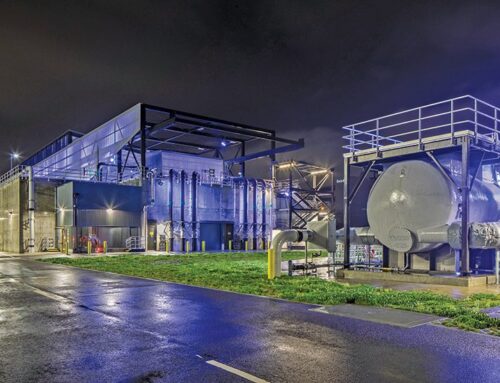Rooftop solar stocks face ‘wipe out’ but First Solar shares could double, says clean energ
June 20, 2025
The U.S. Senate’s latest draft of President Donald Trump’s signature tax bill is expected to wreck the rooftop solar industry, while rewarding large-scale renewable energy operators. According to FactSet data, shares of rooftop solar energy firms Sunrun and SolarEdge have declined by 36% and 29% since the release of the Senate’s version of the One Big Beautiful Bill earlier this week, which accelerates subsidy cuts to the sector. Supplier to the sector, Enphase Energy , has also plummeted by 20%. The Senate’s draft ends clean electricity tax credits for wind and solar in 2028, with a gradual decrease starting in 2026. Earlier versions of the bill prescribed subsidies would be curtailed in 2029 or 3031. Investment banks have also rushed to downgrade residential solar stocks, citing an “ongoing and overwhelming regulatory overhang”. KeyBanc Capital Markets slashed its ratings for all three solar stocks to “Underweight,” warning that the new bill “may challenge their business models”. RBC Capital Markets followed suit, lowering its price target for Sunrun and Enphase by 58% and 44%, respectively. Investors haven’t slammed the brakes on all stocks in the solar energy sector, with shares of solar panel makers First Solar and Toyo taking less damage. The rooftop collapse The Senate proposal aims to terminate Section 25D, which has fueled the industry’s growth by offering homeowners 30% of the cost of installing solar panels on rooftops through tax credits. “The rooftop solar industry, they are toast,” Per Lekander, founder of hedge fund Clean Energy Transition, told CNBC’s Squawk Box Wednesday. “I think the whole sector could get wiped out” Wall Street analysts have echoed that bleak assessment. RBC’s analysts, led by Christopher Dendrinos, said they were lowering demand and margin assumptions for residential solar names based on the proposed “resi solar lease restrictions and termination of 25D”. Janney analysts meanwhile noted the Senate proposal means “residential solar being boxed out of tax credits”, creating “more headwinds for domestic residential solar demand”. These legislative headwinds come as the sector is already under pressure from higher interest rates, which have made consumer financing more expensive. Lekander pointed to the recent bankruptcy of U.S. energy firm Sunnova as evidence of his assessment. Resilient and insulated While the rooftop sector faces an existential threat, the utility-scale market — which builds large solar farms to power data centers, factories, and entire communities — appears to be somewhat insulated. It is shielded from the impact of subsidy withdrawal largely due to its customer base, its economics, and a sheer lack of viable alternatives. “We believe utility solar will be more resilient,” wrote RBC’s Dendrinos in a June 18 note to clients, because “these projects are not limited by the leasing restrictions” and the “outlook for growing electricity demand remains strong”. The customers for these projects are not individual households but corporations like Meta and Amazon, for whom energy is a relatively small part of a multi-billion-dollar data center budget. “If you [build] a data center, energy power is like 7% of the cost. If 7% of the cost [becomes] 9% of the cost, do you think they will stop this project? I do not think so,” Lekander said. In May, Meta Platforms, owner of Facebook, Instagram, and WhatsApp, inked a deal with utility AES Corp to supply 650 megawatts of solar energy in Texas and Kansas. AES, in turn, will purchase solar panels from manufacturers and suppliers to build the solar farms. In June, the utility company also announced the completion of a 500-megawatt solar farm, with 500 megawatts of battery capacity that can last up to four hour, which will supply power to Amazon’s data centers. This insensitive demand is also strengthened by the impracticality of alternatives. “If you were to go and try to do a gas turbine, you would probably get it delivered in 2033,” Lekander said. “If you want to build a nuclear plant, it’s 2040.” “A solar plant you can do in one year,” the investor added. This reality, analysts suggest, makes utility-scale solar relatively better positioned. RBC’s Dendrinos says that “even absent tax credits we believe solar remains highly cost competitive with other fossil fuel generation technologies”. However, the Senate bill includes a surprise provision that would repeal the “stacking” of the manufacturing tax credit, and hurt Arizona-based First Solar, America’s largest panel manufacturer. The change could prevent the company from claiming credits for each stage of its integrated process—wafer, cell, and module—potentially more than halving its benefit from $0.17 per watt to just $0.07 per watt, according to RBC Capital Markets. But Per Lakander says the sell-off in First Solar is not a crisis but a “great buying opportunity” for long-term shareholders. Asked about the valuation of First Solar’s double-digit percent stock plunge, he answered unequivocally: “It is wrongly priced. Okay? It’s going to double.”
Search
RECENT PRESS RELEASES
Related Post



